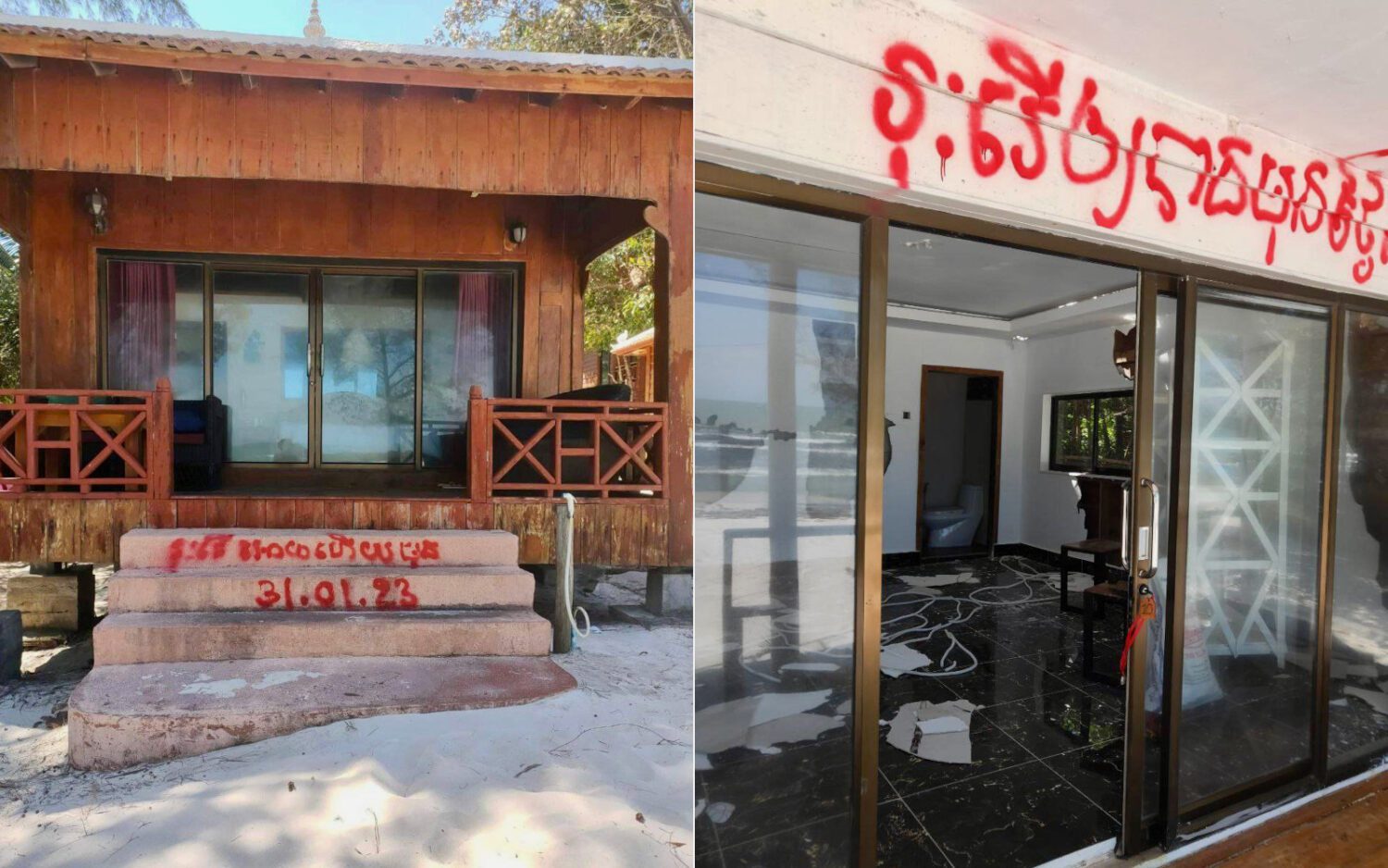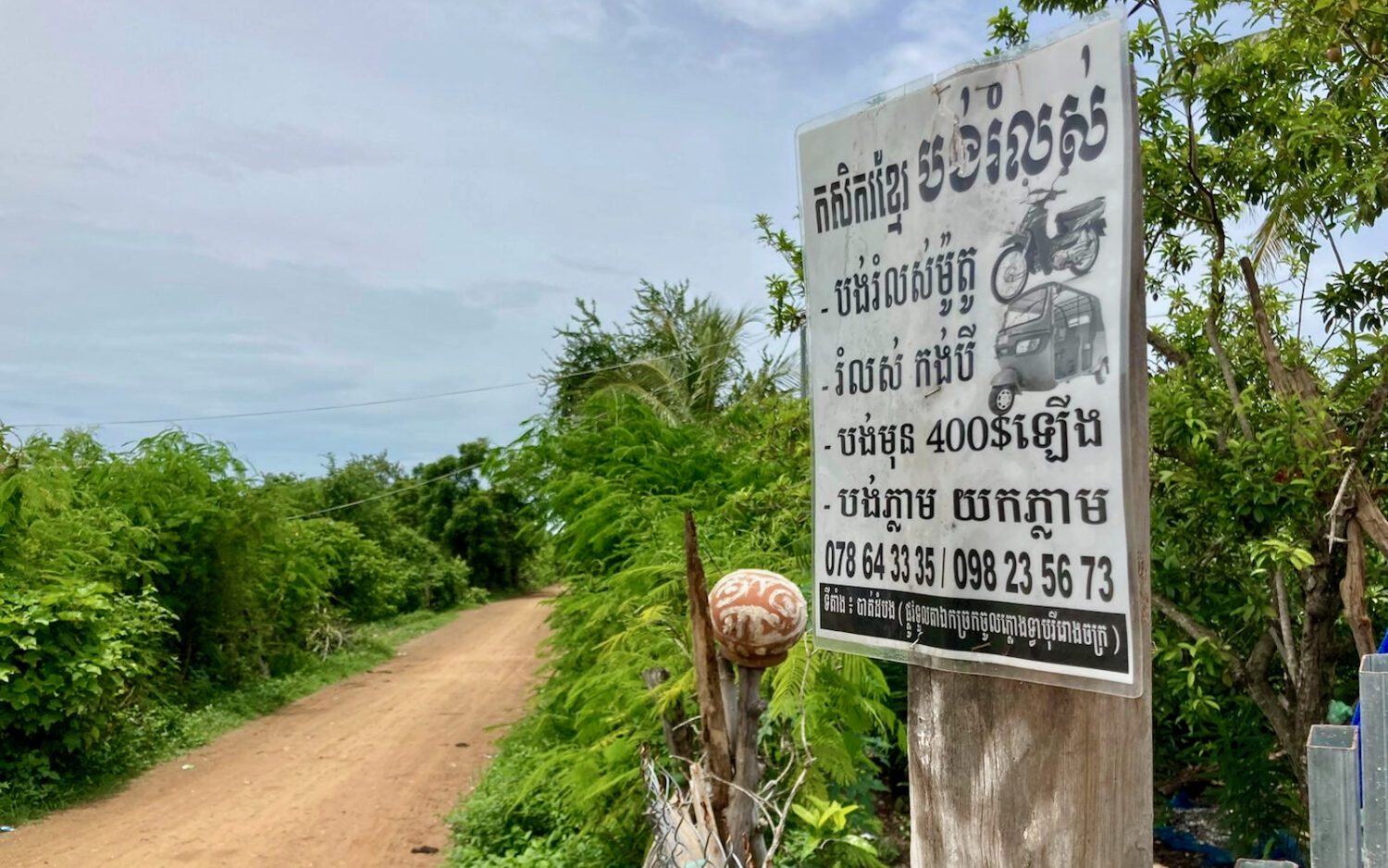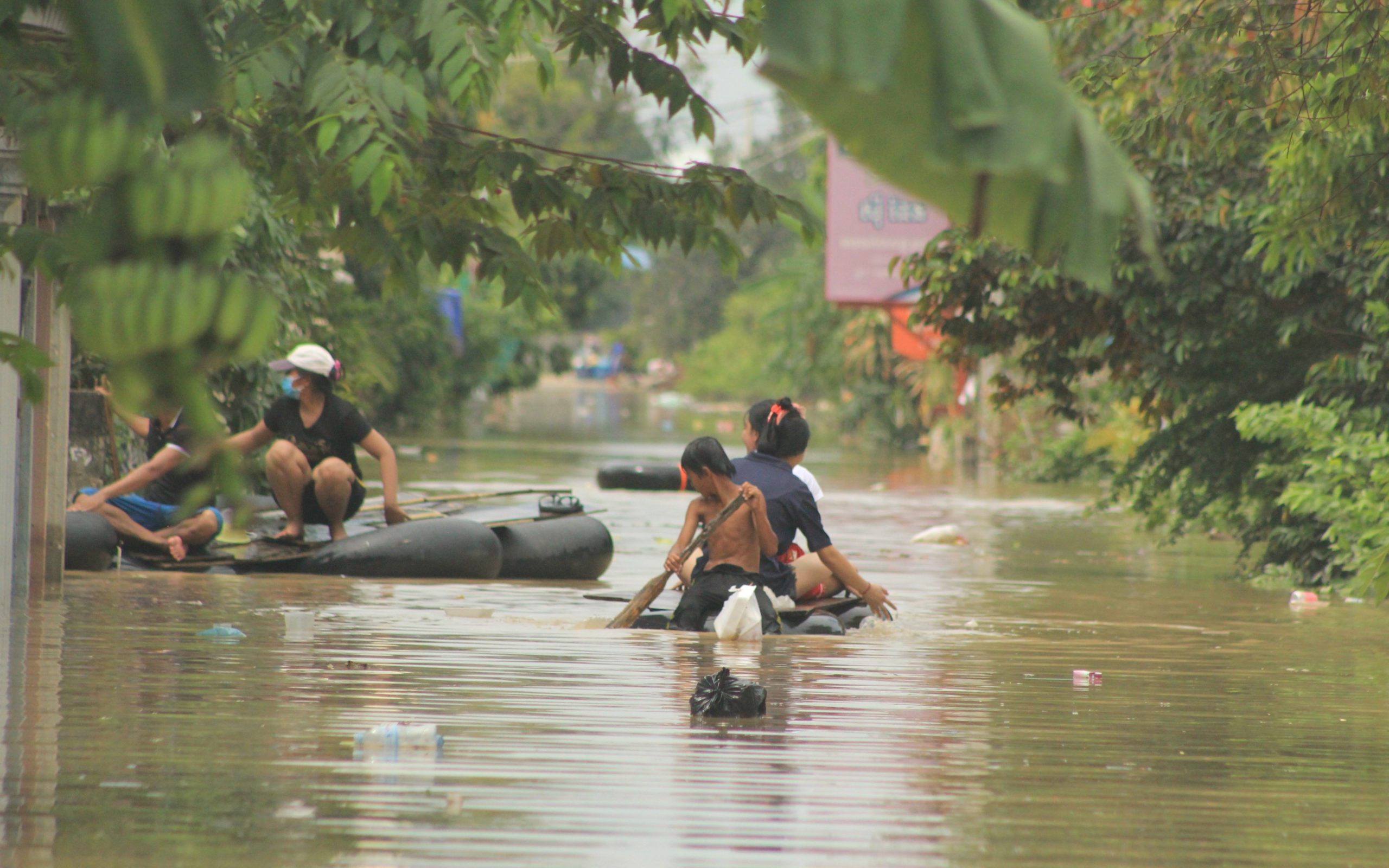The old adage goes: It is not the destination that matters, it is the journey. But for a city, the exact opposite is true — it’s not the trudging commute that matters, it’s the destination.
 Ses Aronsakda is a junior researcher at Future Forum. Educated as an architect, he conducts research on Phnom Penh’s urban planning with interests in all aspects of cities and urban design.
Ses Aronsakda is a junior researcher at Future Forum. Educated as an architect, he conducts research on Phnom Penh’s urban planning with interests in all aspects of cities and urban design.
This holds true for Cambodian urbanites. To them, busy streets and thoroughfares are just something they grudgingly deal with on the way to where they actually want to be. After all, a city’s road network mundanely carries traffic, goods, and people and are rarely if ever seen as more than just that.
But the importance of city streets hides in plain sight. For Phnom Penh, streets often represent the only fully public space left. And their correct utilization holds the key to a more vibrant, livable and prosperous city.
Street as Destination
The concept of revitalizing streets as destinations may seem strange. Yet some of the most memorable, and celebrated spaces of a city are often its streets. The Champs-Élysées in Paris, the Passeig de Gràcia of Barcelona, New York’s Broadway, and even Phnom Penh’s very own Sisowath Quay are just a few examples.
The most obvious factor for a vibrant street is space for pedestrians and cyclists. If streets are to be a destination then there must be space to leisurely walk, cycle or do some window shopping, and parklets for passersby to rest, have a conversation or do some people-watching. This means motorized vehicles must give up some space, although this does not necessarily mean user volumes have to be decreased. In fact, the opposite is true.
Footpaths and cycling lanes on average carry more people per hour than a driving lane, while the inclusion of a public transit line (bus or tram) makes a street more accessible for visitors who are further away.
Take New York’s Broadway, particularly Times Square, as an example. Well-served by public transit, this section of the avenue benefits from a road diet redesign, which replaced space for motor vehicles with pedestrian footpaths, cycling lanes and a public plaza — converting what was once a highly congested intersection into a lively public square.
A well-designed street must also maintain a sense of enclosure and protection against the climate — in Cambodia this would mean protection against high temperatures, and strong rains. This is where buildings and trees play a crucial role, providing shading, an interesting backdrop and a sense of enclosure.
In short, appealing streets are people-friendly, well connected by public transit, and are beautifully framed and shaded by trees and buildings. But these changes don’t just benefit the people who use the streets. There is also reason to believe businesses benefit as well.
Destination Streets Are Great for Business
In a number of research papers studying the direct economic impacts of designing streets to reduce vehicle traffic and increase cycling and foot traffic, the results collectively illustrate a positive impact for local businesses.
Spending differences between motorists and active commuters are relatively small with drivers spending $47 and cyclists spending $43 per trip. But it’s important to remember that pedestrians and cyclists spend more time along retail areas, are more likely to visit the shops they pass by, and revisit them more frequently than drivers. Hence, overall they contribute to more sales revenue over time.
Lastly, businesses can accommodate more active commuters compared to drivers. A single car parking spot can be used to park six bicycles, and of course no parking is needed for pedestrians.
And let’s not forget that the by-products of a well designed street goes beyond just good business.
Vibrant streets benefit society by establishing spaces for socio-cultural activities, like having social interactions, promoting architectural and historical heritage, while contributing to place-making value for a city.
They benefit the environment with the addition of trees and other greenery, contributing to urban biodiversity and improving local microclimate — from reducing urban heat gain to noise and air pollution, as well as improving water infiltration, and more.
Lastly, well-designed streets are beneficial to public health, with the reduction or complete absence of motor traffic creating a safer environment for all users, reducing air and noise pollution, and getting more city dwellers to stay physically active.
Better Streets for Phnom Penh
Phnom Penh certainly has the potential to develop attractive, lively, and activity-rich streets. One such street is Street 184, which stretches 1.4 kilometers east to west from the riverfront to Monivong Boulevard.
The first step would be to prioritize active commuters. The stretch between the National Museum to Norodom Boulevard has the potential to be fully pedestrianized. Since it is mostly flanked by large public buildings, and small food and beverage shops which will be easier to convince these vendors of the benefit of full pedestrian traffic.
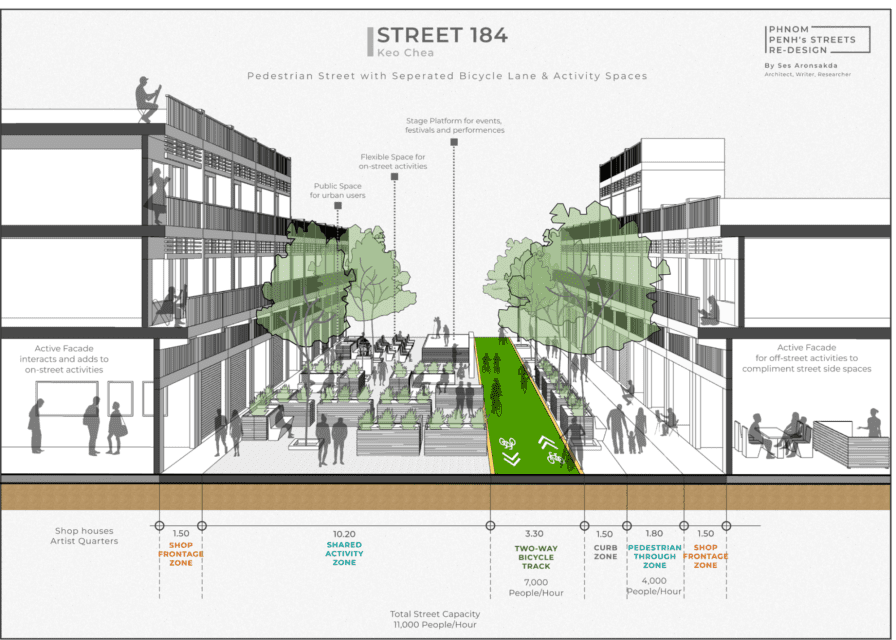
The last stretch starting from Sisowath High School toward the Institut Français should be redesigned using a shared street concept. Such a street would be designed for pedestrians as the priority user, while still allowing for limited, slow-moving motor traffic for local drivers only (preventing through traffic). This can be done by retaining a single narrow driving lane, introducing a chicane (bends in the roadway), installing street furniture, green swales and trees as obstacles to slow down drivers and make them drive more carefully.
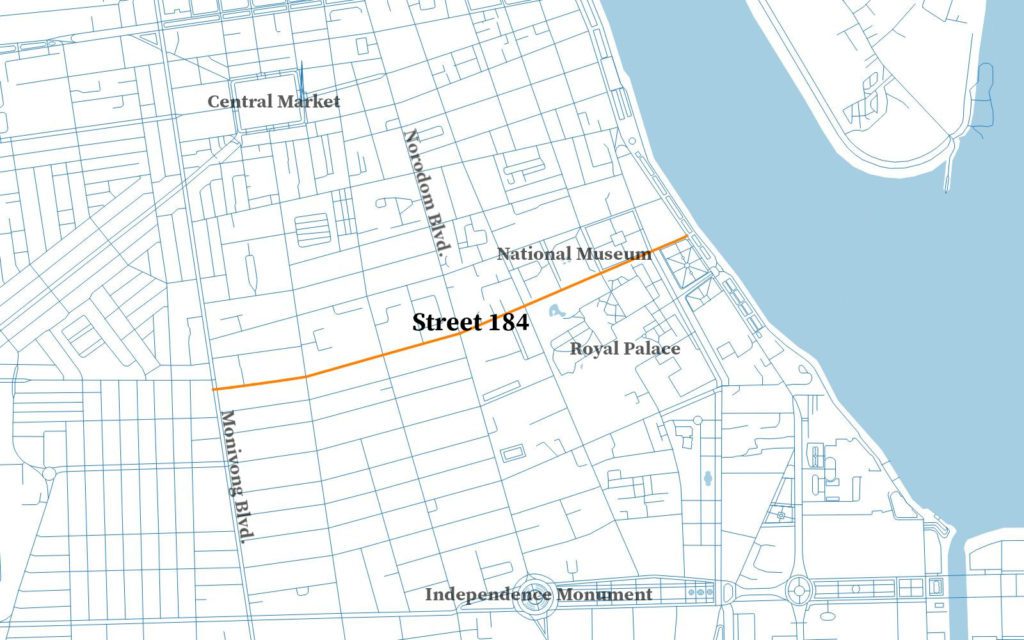
Finally, with a suitable environmental setup, local planners should strive to encourage activity along the street and generate place-making value. Efforts could be made to not only expand economic activity but to encourage identity, thus making street 184 into a true destination.
At the eastern end, the section of street 184 that runs past the Royal University of Fine Arts and National Museum could serve as a nucleus for cultural and artistic-related endeavors. Apart from the already-established art houses and studios, the street can be further designed to feature semi-permanent street furniture, like seating, stages, etc. allowing indoor cultural activities to spill out onto the walkways. At intervals, small plazas could be incorporated to host events like local art shows, festivals and exhibitions.
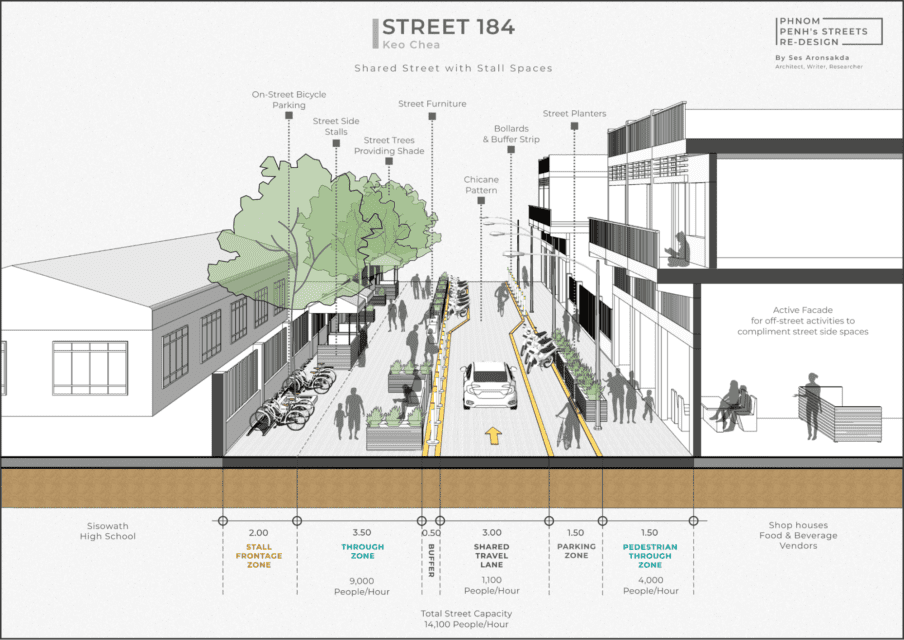
As a budding artistic and creative destination this would put street 184 on the map for both locals and visitors, while also highlighting the benefits of a fully pedestrianized street.
The second half of the road consists of a few schools, several office blocks, and residential buildings. In this latter half, urban designers should design spaces for pedestrians to rest, relax, or enjoy a meal. Again, street furniture is crucial this time with a focus on creating cozy seating areas and gathering places.
This will encourage locals to open shops catering towards office workers, students, and locals for their daily needs. Architects and local authorities should also incorporate street vendors into the streetscape, providing them with designated spots, adding to the variety available.
These two separate but complementary focuses would give Street 184 a well-balanced mixture of functions to accommodate the needs of both locals and visitors, while converting it into a vibrant destination.
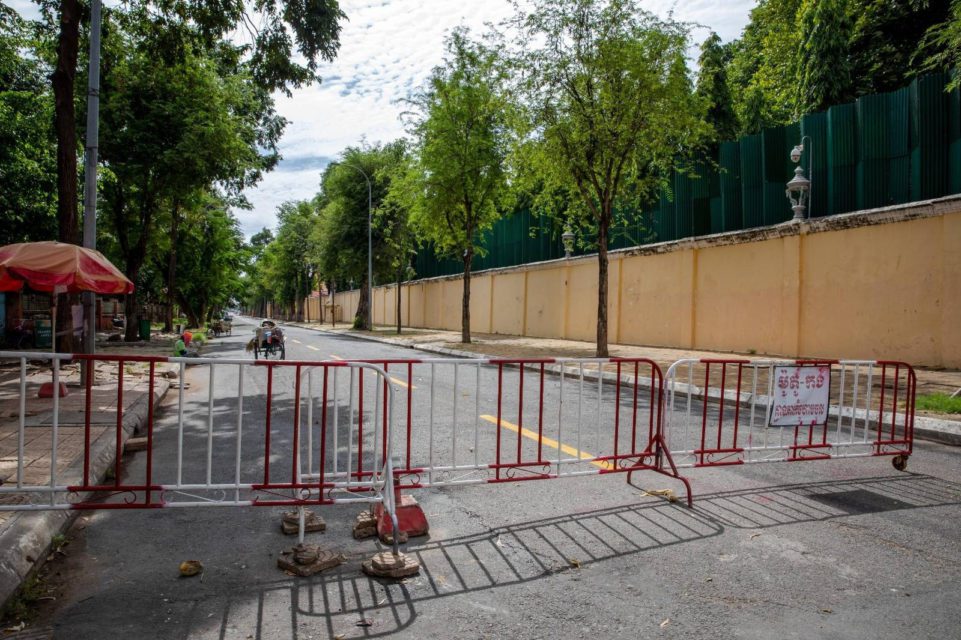
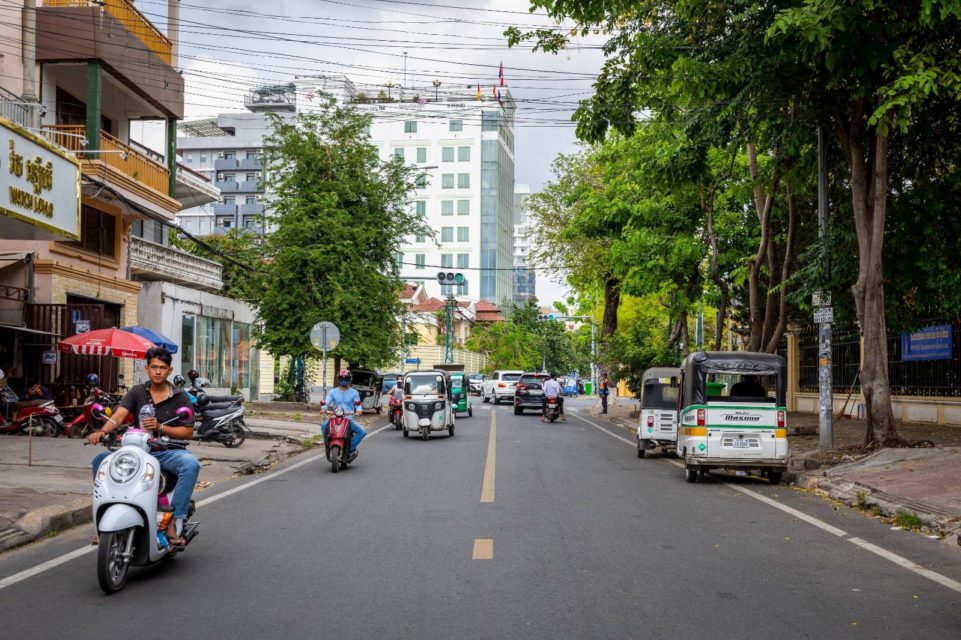
Conclusion
Street 184 is just one possible candidate. Many other suitable streets exist across Phnom Penh, which stand testimony to the excellent urban planning heritage the city has.
Therefore, Phnom Penh should not ignore its streets’ potential to revitalize the city. When well-designed and carefully managed, the humble city street can be more than just a piece of transportation infrastructure. It can ensure that inhabitants will enjoy a more livable, vibrant, and prosperous urban environment. It only takes us to rethink the roles these streets can play in all our lives.
Ses Aronsakda is a junior researcher at Future Forum. Educated as an architect, he conducts research on Phnom Penh’s urban planning with interests in all aspects of cities and urban design.








